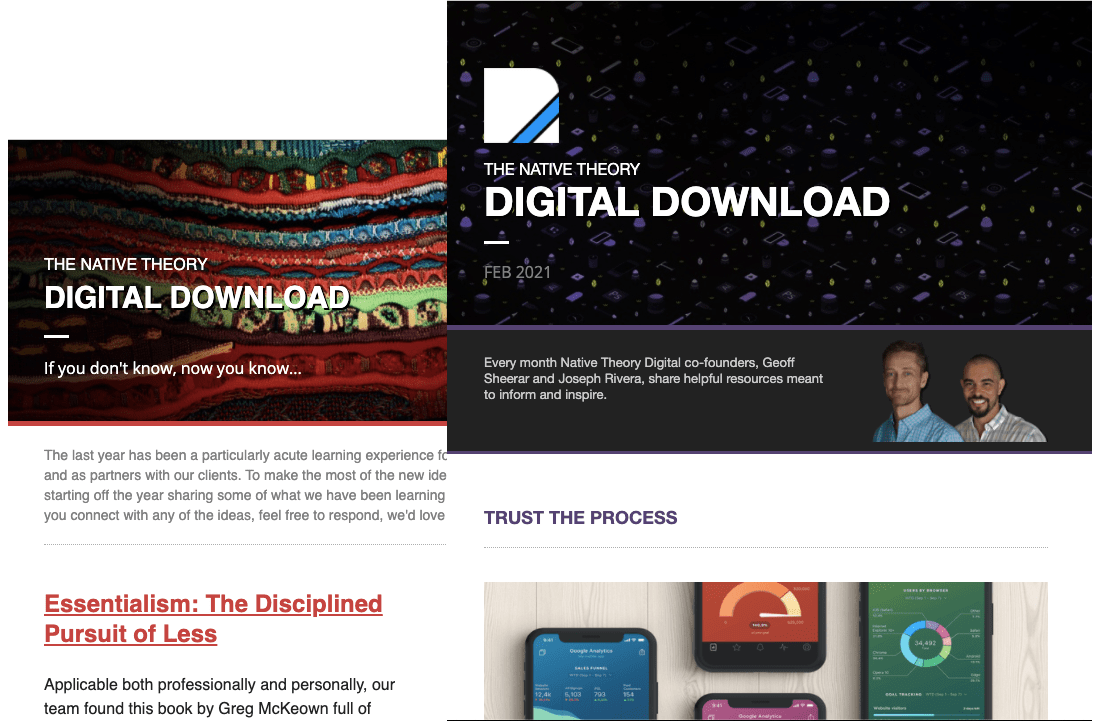Are your email open rates disappointingly low? Are you struggling to drive conversions through your email marketing campaigns? Don’t worry, you’re not alone. Grabbing the attention of your subscribers and getting them to engage with your emails is becoming increasingly challenging. However, there are proven strategies to help you start mastering the art of effective email marketing and boost your open rates.
In this article, I will delve into the key tactics that successful marketers use to grab their readers’ attention and drive them to take action. We will explore the importance of crafting compelling subject lines that entice recipients to open your emails, as well as how to create persuasive and engaging email content that resonates with your audience.
The Importance of Email Marketing for Businesses
Email marketing is a powerful tool that allows businesses to directly communicate with their target audiences. It can help build relationships, increase brand awareness, and drive conversions. In fact, email marketing has consistently proven to be one of the most effective digital marketing channels, delivering an impressive ROI. According to recent studies, for every $1 spent on email marketing, the average return on investment is $42. (Source: Litmus) That’s a staggering statistic that highlights the importance of incorporating email marketing into your overall marketing strategy.
Email marketing allows you to reach your audience in a more personalized and targeted way compared to other marketing channels. With email, you can segment your audience based on their preferences, behaviors, and demographics, ensuring that your message resonates with the right people at the right time. This level of personalization not only increases engagement but also builds trust and loyalty among your subscribers. As a result, email marketing can help you nurture leads, drive repeat purchases, and ultimately grow your business.

Email Marketing Statistics and Trends
Before getting into the strategies and tactics of effective email marketing, let’s take a moment to review some key statistics and trends in the industry. Understanding these insights will provide valuable context and help you make informed decisions when planning your email marketing campaigns.
- According to a recent report, the average open rate for emails across industries is around 21.33%. However, this can vary significantly depending on factors such as industry, target audience, and the quality of your email list. (Source: Mailmunch)
- Mobile devices account for more than 55% of email opens, so it’s crucial to ensure that your emails are mobile-friendly and optimized for different screen sizes. (Source: Branch.io)
- Personalized subject lines have been found to be 26% more likely to be opened. By addressing recipients by their name or using other personalization techniques, you can grab their attention and make your emails more relevant. (Source: Paubox)
- Automated email campaigns, such as welcome emails and abandoned cart reminders, have higher open and click-through rates compared to one-time campaigns, sometimes as much as 152% higher. (Source: LinkedIn) Automating your email marketing allows you to deliver timely and targeted messages to your subscribers, increasing their engagement and likelihood of conversion.
By keeping these statistics and trends in mind, you can better understand the current landscape of email marketing and use this knowledge to inform your strategies moving forward.
Building an Effective Email Marketing List
Before being able to send effective email campaigns, you need to build a high-quality email marketing list. The success of your email marketing efforts heavily relies on the quality and relevance of your subscribers. Here are some key tactics to help you grow your email list and attract the right audience:
- Website Sign-up Forms: Place sign-up forms prominently on your website to capture visitors’ email addresses. Consider offering an incentive, such as a free e-book or discount, to encourage sign-ups.
- Social Media Promotion: Leverage your social media channels to promote your email newsletter and encourage followers to join your list. Consider running contests or giveaways to incentivize sign-ups.
- Content Upgrades: Offer exclusive content upgrades, such as downloadable guides or templates, to visitors who subscribe to your email list. This not only provides value to your audience but also helps you capture their email addresses.
Remember that building an email list is an ongoing process. It’s important to regularly review and clean your list to ensure it remains engaged and relevant. Remove inactive subscribers, keep an eye on bounced emails, and constantly seek to attract new subscribers who align with your target audience.

Crafting Compelling Subject Lines and Email Content
The subject line of your email plays a crucial role in determining whether or not your subscribers will open it. It’s your first opportunity to grab their attention and entice them to click. Here are some tips for crafting compelling subject lines:
- Personalization: Use your subscribers’ first names or other personal details in the address fields to make the email feel more personalized and relevant to them.
- Curiosity: Create intrigue by using curiosity-inducing subject lines that leave readers wanting to know more. However, avoid clickbait, that is, be careful not to mislead or overpromise in your subject lines.
- Urgency: Create a sense of urgency by using time-sensitive language or limited-time offers in your subject lines. This can create a fear of missing out and prompt recipients to not wait to open your email.
Once you’ve successfully grabbed your subscribers’ attention with your subject line, it’s essential to deliver on your promise with engaging email content. Here are some best practices to keep in mind:
- Offer Value: Consider everything you know about your work and what you do. Chances are that you are an expert in more ways than one. Build content off experience and expertise by offering your target audience insights that are helpful and valuable.
- Clear and Concise: Keep your email content concise and to the point. Use short paragraphs, bullet points, and subheadings to make it scannable and easy to read.
- Compelling Copy: Use persuasive language and compelling storytelling techniques to captivate your audience. Focus on value and intertwine information that highlights the benefits of what you offer and explain how it can help to solve their problems or meet their needs.
- Call-to-Action: This part is often overlooked, but vital. Include a clear and prominent call-to-action (CTA) in your email. Whether it’s to make a purchase, sign up for an event, or download a resource, make it easy for your subscribers to take the desired action.
Remember that most importantly, the content of your emails should be valuable and relevant to your audience. Provide them with valuable insights, useful information, and even exclusive offers that make them feel special and appreciated.
Personalization and Segmentation in Email Marketing
One-size-fits-all email marketing campaigns are a thing of the past. To most effectively connect with your subscribers and drive engagement, personalization and segmentation are important. Here’s how you can leverage these strategies in your email marketing:
- Personalization: Use the data you have on your subscribers to personalize your emails. Address them by their name, recommend products based on their past purchases, or send them personalized birthday/anniversary offers.
- Segmentation: Divide your email list into smaller segments based on shared characteristics or behaviors. This allows you to send more targeted and relevant emails to specific groups of subscribers. For example, you could segment your list by location, interests, or engagement level.
By personalizing your emails and targeting specific segments, you can deliver more relevant and valuable content to your subscribers, increasing the chances of engagement and conversion.
Optimizing Email Deliverability and Open Rates
Even if you craft the perfect email with a captivating subject line and compelling content, it won’t be effective if it doesn’t reach your subscribers’ inboxes. Email deliverability refers to the ability of your emails to successfully land in your subscribers’ inbox instead of their spam folder. Consider these ideas to optimize your email deliverability and improve open rates.
- Maintain a Clean Email List: Regularly review your email list and remove inactive or bounced email addresses. High bounce rates and spam complaints can negatively impact your email deliverability.
- Monitor Sender Reputation: Monitor your sender reputation by keeping an eye on metrics such as spam complaints, unsubscribe rates, and email engagement. A good sender reputation increases the chances of your emails reaching the inbox.
- Avoid Spam Trigger Words: Be mindful of the words and phrases you use in your subject lines and email content. Certain words, such as “free,” “discount,” or “limited time,” can trigger spam filters and decrease deliverability.
By keeping these best practices in mind, you can improve your email deliverability and help to ensure that your carefully crafted emails reach your subscribers’ inboxes.

Call-to-Action Strategies for Driving Conversions
A call-to-action (CTA) is a vital component of any effective email marketing campaign. It directs your subscribers to take a specific action, such as making a purchase, signing up for a webinar, or downloading a resource. Here are some strategies to optimize your CTAs and drive conversions:
- Clear and Compelling: Make sure your CTA stands out and is easy to understand. Use action-oriented words and look to create a sense of urgency to encourage immediate action.
- Placement and Design: Position your CTA prominently within your email, preferably above the fold. Use contrasting colors and design elements that draw attention to the CTA button.
- Testing and Optimization: Test different variations of your CTAs to see which ones generate the highest click-through rates and conversions. Continuously optimize and refine your CTAs based on the data and insights you gather.
Remember to align your CTA with the goal of your email and provide a clear and compelling reason for your subscribers to take action. Make it as easy as possible for them to convert by removing any unnecessary barriers or friction points.
Email Marketing Analytics and Tracking
To truly master the art of effective email marketing, it’s essential to measure the performance of your campaigns and track key metrics. Email marketing analytics provides valuable insights into how your emails are performing, helping you identify areas for improvement and make data-driven decisions. Here are some key metrics to track:
- Open Rate: The percentage of recipients who opened your email. A low open rate could indicate issues with your subject lines or sender reputation.
- Click Rate: The percentage of recipients who clicked on a link or CTA within your email. This metric measures engagement and the effectiveness of your email content and CTAs.
- Conversion Rate: The percentage of recipients who took the desired action, such as making a purchase or filling out a form. This metric directly measures the success of your email campaigns in driving conversions.
- Bounce Rate: The percentage of emails that were not successfully delivered to the recipient’s inbox. A high bounce rate could indicate issues with your email list quality or email deliverability.
By consistently analyzing these, as well as other metrics, and tracking your email marketing performance, you can identify trends, optimize your campaigns, and achieve better results over time.
Take the First Step Towards Mastering Email Marketing
Email marketing is a powerful tool that, when used effectively, can drive engagement, build relationships, and boost an organization’s conversions. By implementing the above strategies and tactics discussed, you can take a step toward mastering the art of effective email marketing and take your campaigns to another level.
Remember to focus on crafting compelling subject lines and email content, personalizing and segmenting your emails, optimizing email deliverability and open rates, and using effective call-to-action strategies. Track your email marketing performance through analytics and continuously test and optimize your campaigns based on the insights you gather.
For more details on how to get strategic email marketing working for your organization, check this page or contact us directly to set up a free 30min consulting call.



